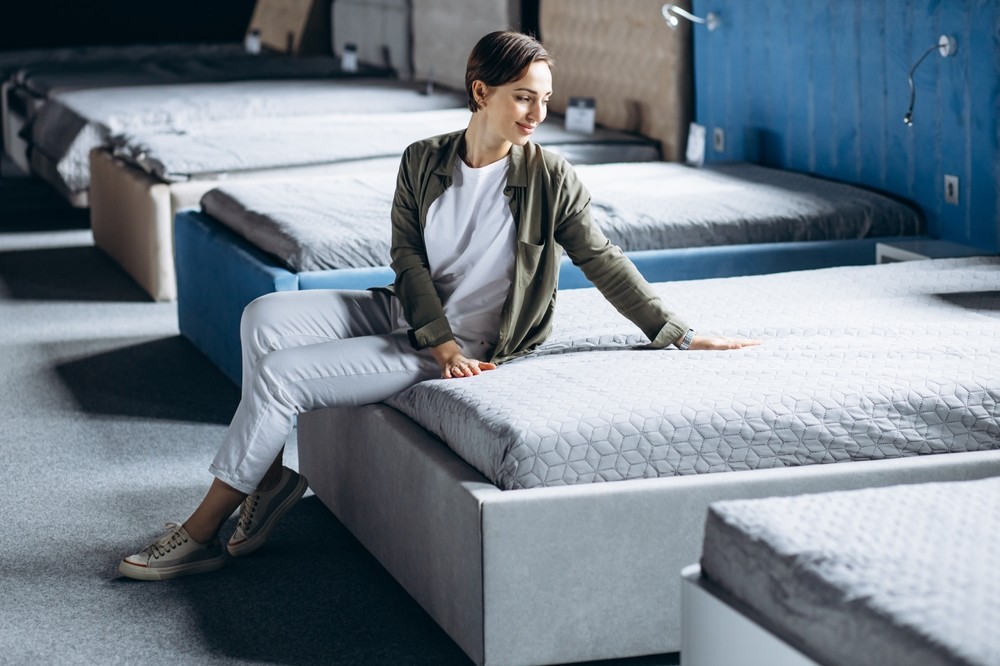Getting a good night’s sleep is pivotal for maintaining both physical health and mental well-being. A significant factor influencing the quality of your sleep is the mattress you choose. With the plethora of options available in the market, selecting the right mattress can be overwhelming. This article will guide you through essential considerations to help you make an informed decision and enhance your sleep quality.
Understand Your Sleeping Position
Your preferred sleeping position greatly influences which type of mattress will best suit your needs. Here’s a breakdown of common sleeping positions and their mattress requirements:
- Side Sleepers: Opt for a softer mattress that provides ample cushioning for your shoulders and hips, ensuring proper alignment of your spine. Memory foam or a hybrid mattress with a plush top can be a good choice.
- Back Sleepers: A medium-firm mattress is ideal for back sleepers, as it supports the lower back while allowing for slight give at pressure points. Look for latex or memory foam materials for optimal support.
- Stomach Sleepers: A firmer mattress helps keep the hips from sinking too deeply, maintaining spine alignment. Innerspring or firmer foam mattresses are preferable.
- Combination Sleepers: If you frequently change positions during the night, a medium-firm mattress could provide the versatility needed to accommodate various sleeping positions comfortably.
Consider Mattress Types
Understanding the different types of mattresses can help you narrow down your choices. Here are the most common types and their benefits:
- Memory Foam: Known for its excellent contouring properties, memory foam mattresses can provide significant comfort and pressure relief. They are particularly suitable for side sleepers and those with back or joint pain.
- Innerspring: Traditional and widely used, innerspring mattresses offer robust support and a bouncy feel. They are often more affordable and can be ideal for stomach sleepers.
- Latex: Made from natural or synthetic rubber, latex mattresses are durable and offer good responsiveness and cooling. They are a great choice for those who prefer a bit more bounce and natural materials.
- Hybrid: Combining layers of foam and innerspring coils, hybrid mattresses offer a balance of comfort, support, and responsiveness. They suit a variety of sleep positions, allowing for versatility and enhanced airflow.
- Airbed: With adjustable firmness levels through increased or decreased air in the mattress chambers, airbeds are ideal for those who want customizable support levels.
Evaluate Mattress Firmness
Mattress firmness is crucial for comfort and spinal alignment. Firmness levels are generally categorized from 1 (softest) to 10 (firmest). However, manufacturers may label them with terms such as soft, medium, medium-firm, etc. Consider the following factors when choosing the right firmness:
- Body Weight: Heavier individuals may require a firmer mattress to prevent excessive sinkage, while lighter individuals might prefer softer options for adequate pressure relief.
- Comfort Preference: Personal comfort preference significantly influences the perceived firmness. When a mattress feels right to you, it likely offers the correct level of support and comfort.
- Health Concerns: Those with back, hip, or joint problems should consult a healthcare professional for guidance on the suitable firmness level to alleviate discomfort.
Check for Motion Isolation
For light sleepers or couples sharing a bed, motion isolation is a key factor. Mattresses with good motion isolation prevent disturbances caused by movement on the other side of the mattress. Memory foam and latex often excel in this area, while innerspring models may have less effective motion isolation.
Assess Temperature Regulation
Temperature regulation can be crucial for comfortable sleep, especially for hot sleepers. Consider the following options to enhance cooling:
- Cooling Technologies: Look for mattresses with gel-infused foams, open-cell memory foam, or breathable covers. These features help dissipate heat and keep you cooler.
- Natural Materials: Latex and cotton offer more breathable options than synthetic materials.
- Hybrid Construction: The coils in hybrid mattresses promote airflow, allowing heat to escape and preventing overheating.
Evaluate Durability and Longevity
A mattress is a long-term investment, and its durability should reflect that. While the average mattress lasts about 7 to 10 years, the longevity can vary depending on the materials and build quality:
- Material Quality: High-quality materials like latex tend to last longer compared to lower-quality foams or poorly made innerspring.
- Warranty: A longer warranty can be indicative of the manufacturer’s confidence in the product’s durability.
Consider Budget and Value
While selecting a mattress, it’s crucial to keep budget limitations in mind without compromising on essential features that contribute to a better sleep experience. Here’s how to approach budgeting:
- Set a Realistic Budget: High-quality mattresses come in various price ranges. Determine what you are willing to spend, and keep in mind that spending a bit more on a quality mattress may pay off in terms of longevity and comfort.
- Look for Sales and Discounts: Opportunities such as holiday sales or manufacturer promotions can provide significant savings on a new mattress.
- Evaluate Overall Value: Consider the mattress’s lifespan, comfort, and additional features when determining whether it’s worth the price.
Read Reviews and Seek Recommendations
Real-life experiences from other users can be invaluable when choosing the right mattress. Look for customer reviews online and take note of recurring themes regarding comfort, durability, and customer service. Additionally, seek recommendations from friends, family, or experts who can provide insights into the brands and models they trust.
Explore Trial Periods and Return Policies
Many mattress companies offer trial periods, allowing you to test the mattress in your own home for an extended period. Here’s how to make the most of these offers:
- Look for Generous Trial Offers: A longer trial period allows you to thoroughly evaluate the mattress before making a final decision.
- Understand Return Policies: Be aware of return conditions, shipping costs, and refund policies to ensure a worry-free purchase experience.
Choosing the right mattress is a personal journey, guided by individual preferences, sleeping habits, and specific needs. By understanding the key factors, such as sleeping positions, mattress types, firmness levels, motion isolation, and budget considerations, you will be well-equipped to select a mattress that enhances your sleep quality and fosters better health and well-being. Remember, investing time and research into this crucial element of your sleep environment can lead to restful nights and refreshed mornings.



